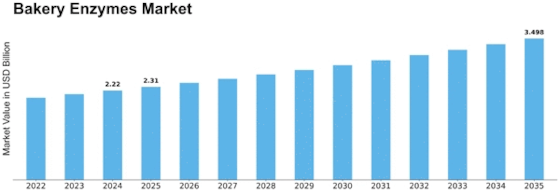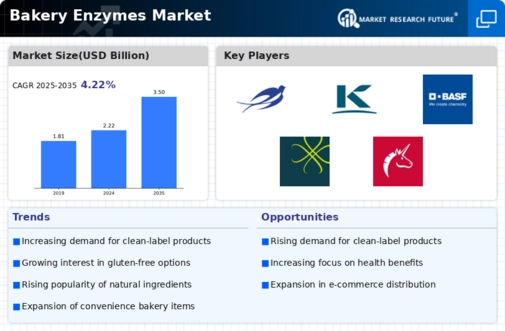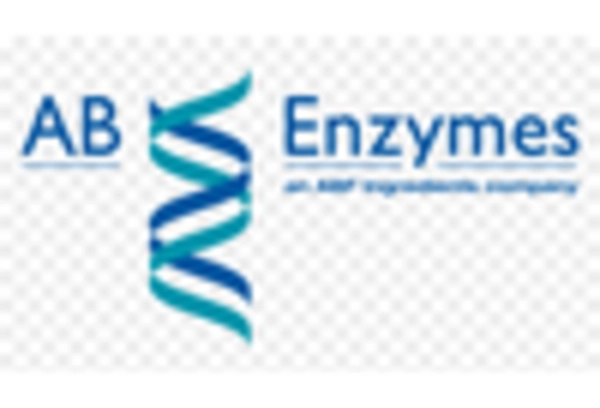Bakery Enzymes Size
Bakery Enzymes Market Growth Projections and Opportunities
The Bakery Enzymes Market is shaped by a combination of factors that contribute to its growth and significance in the baking industry. One primary driver is the increasing demand for bakery products with improved quality, texture, and shelf life. Bakery enzymes, such as amylases, proteases, and lipases, play a crucial role in dough conditioning, fermentation, and the overall baking process. As consumers seek fresher and higher-quality baked goods, manufacturers turn to enzymes to enhance the production efficiency and attributes of various bakery items, including bread, pastries, and cakes.
Changing consumer preferences and dietary trends also play a significant role in the market dynamics. As health-conscious consumers look for cleaner labels and natural alternatives, enzymes offer a solution for improving the texture and quality of baked goods without the need for certain chemical additives. Enzymes contribute to the creation of baked products with better nutritional profiles, reduced gluten content, and enhanced digestibility, aligning with the evolving preferences for healthier options.
Economic factors, including disposable income and pricing strategies, influence the bakery enzymes market. While premium and specialized enzyme products may attract a higher-income demographic, there is also a demand for more affordable options that cater to a broader consumer base. Bakeries and manufacturers often adjust their pricing strategies to incorporate bakery enzymes in various products, influencing market accessibility and consumption.
The competitive landscape of the bakery enzymes market is characterized by the activities of key players striving to offer high-quality and innovative enzyme solutions. Companies engage in research and development to create new enzyme formulations, improve the efficiency of existing enzymes, and address specific challenges in baking processes. Marketing efforts often focus on promoting the functional benefits of bakery enzymes, appealing to manufacturers seeking solutions for improved dough handling, texture, and volume.
Globalization and cultural factors contribute to the market dynamics by influencing regional preferences for specific types of bakery enzymes. Cultural variations in baking traditions and preferences can impact the popularity of certain enzyme varieties in different regions. Additionally, awareness of traditional uses of specific enzymes in various baked goods may influence consumer choices and market trends.
Government regulations and quality standards play a role in shaping the bakery enzymes market. Regulatory bodies may establish guidelines for the use of enzymes in bakery production to ensure consumer safety and product quality. Adherence to these regulations is crucial for market players to maintain the integrity of their enzyme products and comply with industry standards.
Environmental sustainability is an emerging factor influencing the bakery enzymes market. With a growing emphasis on sustainable and responsible sourcing, consumers and companies are becoming more conscious of the environmental impact of food production. Enzyme manufacturers that prioritize eco-friendly practices, such as efficient production processes and waste reduction, can differentiate themselves in the market and appeal to environmentally conscious consumers.


















Leave a Comment